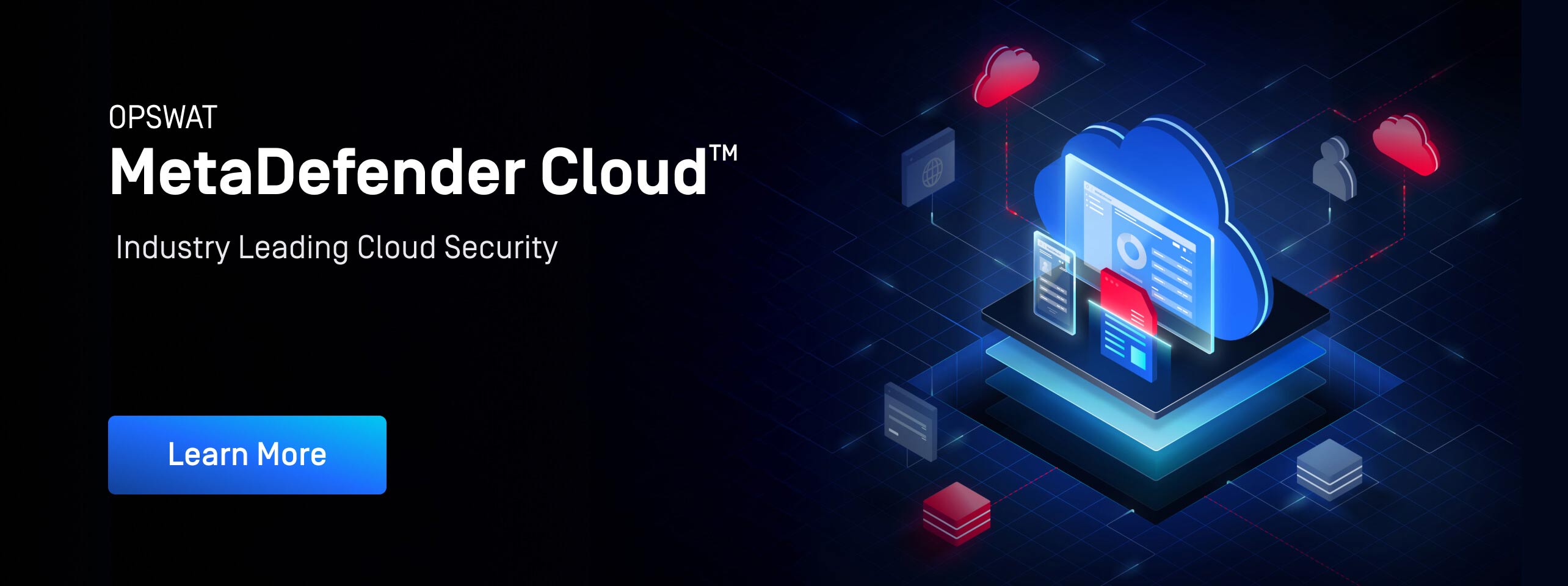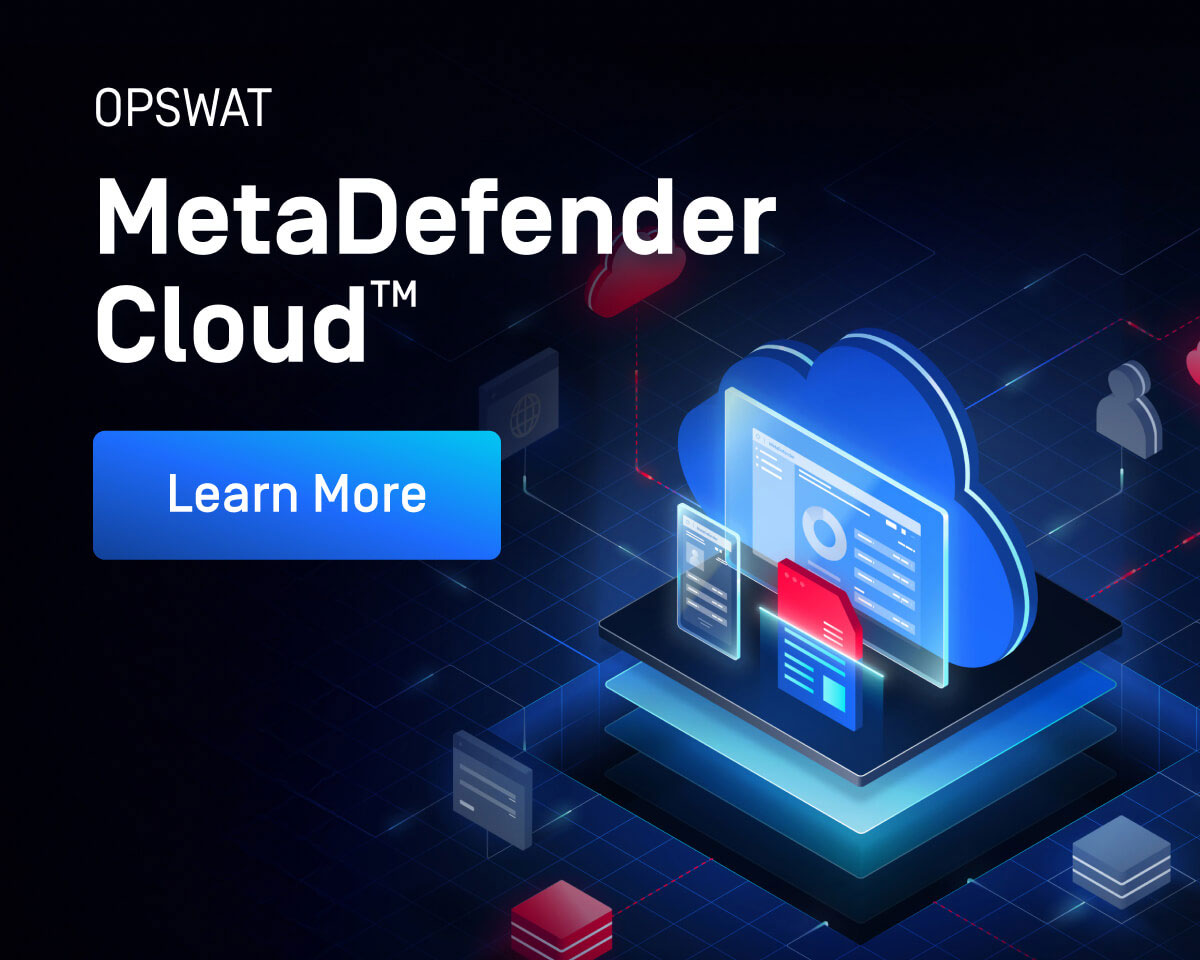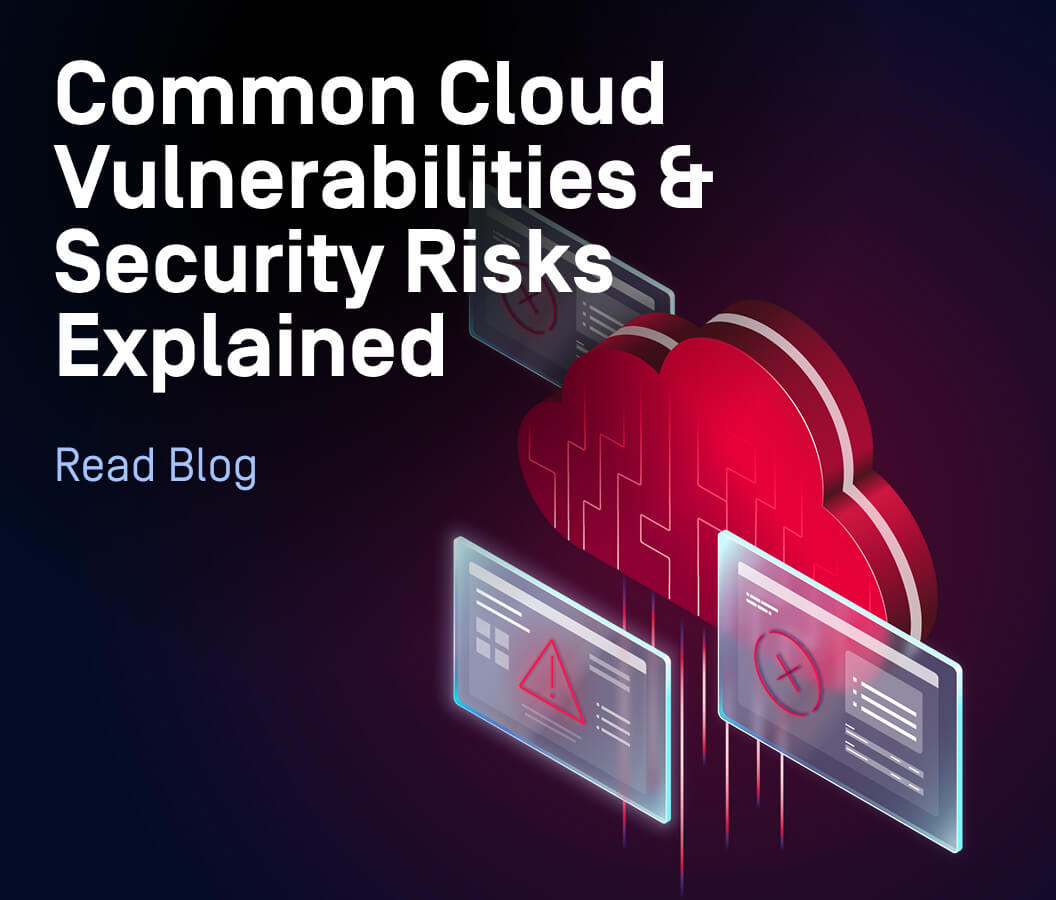- What is Cloud Security?
- What is On-Premises Security?
- Critical Differences Between Cloud and On-Premises Security
- When to Choose Cloud vs On-Premises Security
- Is Cloud Security More Secure Than On-Premises Solutions?
- Which is the Right Solution for Your Business?
- OPSWAT MetaDefender Cloud™ Offers Industry-Leading Cloud Security
- FAQs
With each new project, customer, and digital tool your business adopts, the volume of sensitive data you handle—and your exposure to cyberthreats—grows. The higher your threat exposure, the more essential it is to invest in a reliable security solution to safeguard your assets. This brings you to a critical decision: cloud security or on-premises security?
The choice between cloud vs. on-premises security shouldn’t be driven by trends. Instead, it should be a deliberate decision, based on a careful analysis of your business’s unique compliance and security needs. This article will help you do that, acting as a guide through the key factors to consider when making the decision.
What is Cloud Security?
Cloud security refers to procedures, technologies, and measures that protect cloud-based applications, data, and infrastructure.
Components of Cloud Security
Several key components work together to create a cloud-based security solution which effectively protects your business from both external and internal threats:
(IAM) Identity and Access Management
A policy that limits data access to only a select number of authorized users.
Data Governance
A set of policies and procedures designed to ensure your data is accurate, available, private, secure, and usable.
Risk Mitigation
Strategies, such as multi-factor authentication (MFA), firewalls, and regular updates, that aim to minimize potential threats and vulnerabilities.
Data Recovery and Backup
Processes that ensure your data can be restored in the event of a breach or system failure. This often involves duplicating your data and storing it securely.
Regulatory Compliance
Adhering to industry-specific regulations to maintain data security, privacy, and protection.
What is On-Premises Security?
On-premises security involves housing hardware and software solutions that protect sensitive data within a company's physical location or data center, rather than the cloud.
The organization owns and controls all infrastructure, such as firewalls, servers, and security protocols, and is fully responsible for maintaining, securing, and updating these systems to guard against hackers, data breaches, and other threats.
Advantages of On-Premises Security
Organizations that require full control over their IT infrastructure often find on-premises security solutions to be the most beneficial, as it allows them to customize their security measures to meet specific business needs.
Another major advantage is having the infrastructure within the boundaries of the company’s physical location, particularly useful for businesses operating in countries with strict data localization laws.
Additionally, some people believe that with on-premises solutions a data breach would only occur if an attacker physically accessed the premises and the equipment. However, on-premises being more secure isn’t a generally accepted fact.
Advantages of Cloud Security
The cost of on-premises security, which includes both hardware and ongoing maintenance, can be quite substantial. Cloud security, however, provides a cost-effective solution with more efficient investment opportunities.
Beyond cost savings, cloud security is inherently scalable, allowing your security infrastructure to expand in line with your business growth, no matter the size of your organization. Cloud security is also more accessible, ensuring that solutions, data, and applications are available anytime and from virtually any location, provided the appropriate usage privileges are in place.
On that note, cloud security solutions can be deployed much faster than traditional on-premises systems, enabling businesses to upgrade security faster and respond to cyberthreats more effectively. Finally, cloud security simplifies compliance, as providers usually assist organizations in meeting their legal and regulatory obligations.
Critical Differences Between Cloud and On-Premises Security
The main difference between the two approaches is the location:
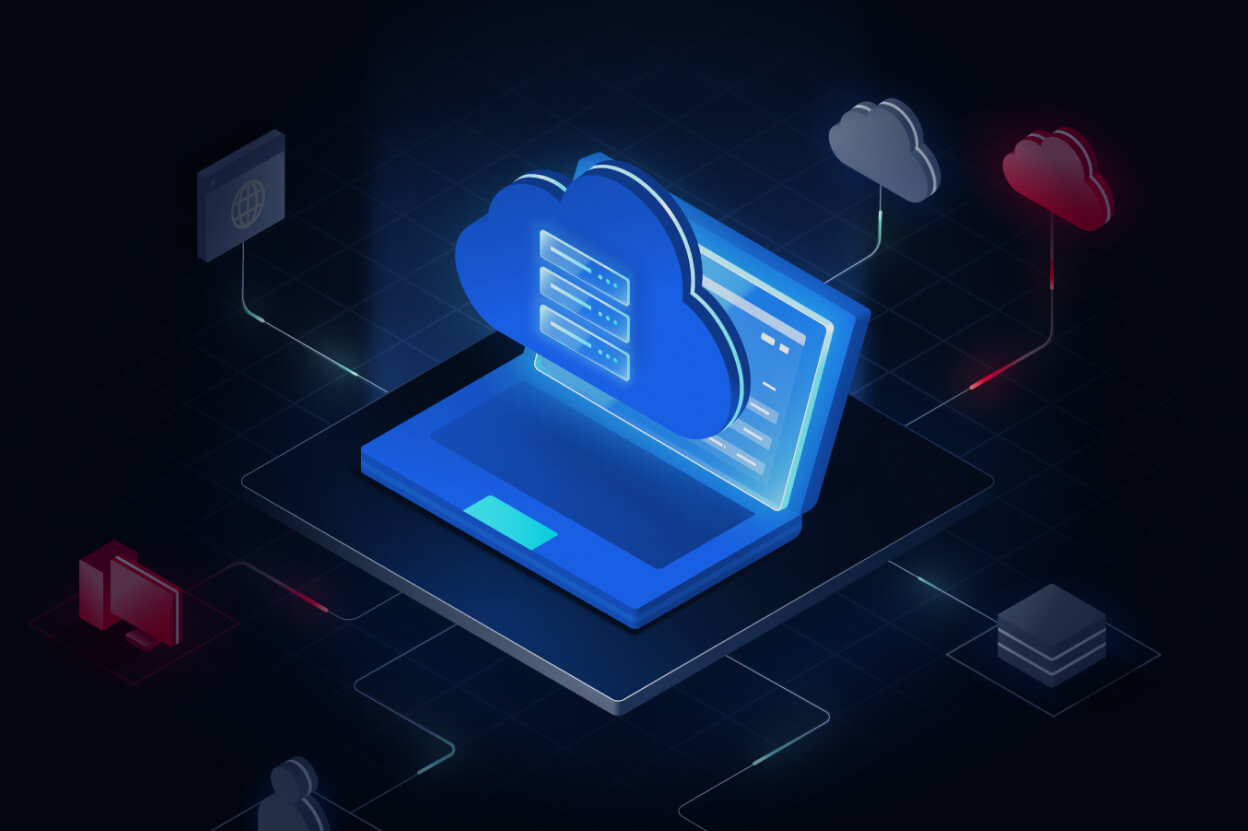
Cloud-based security software is hosted on the provider’s servers.
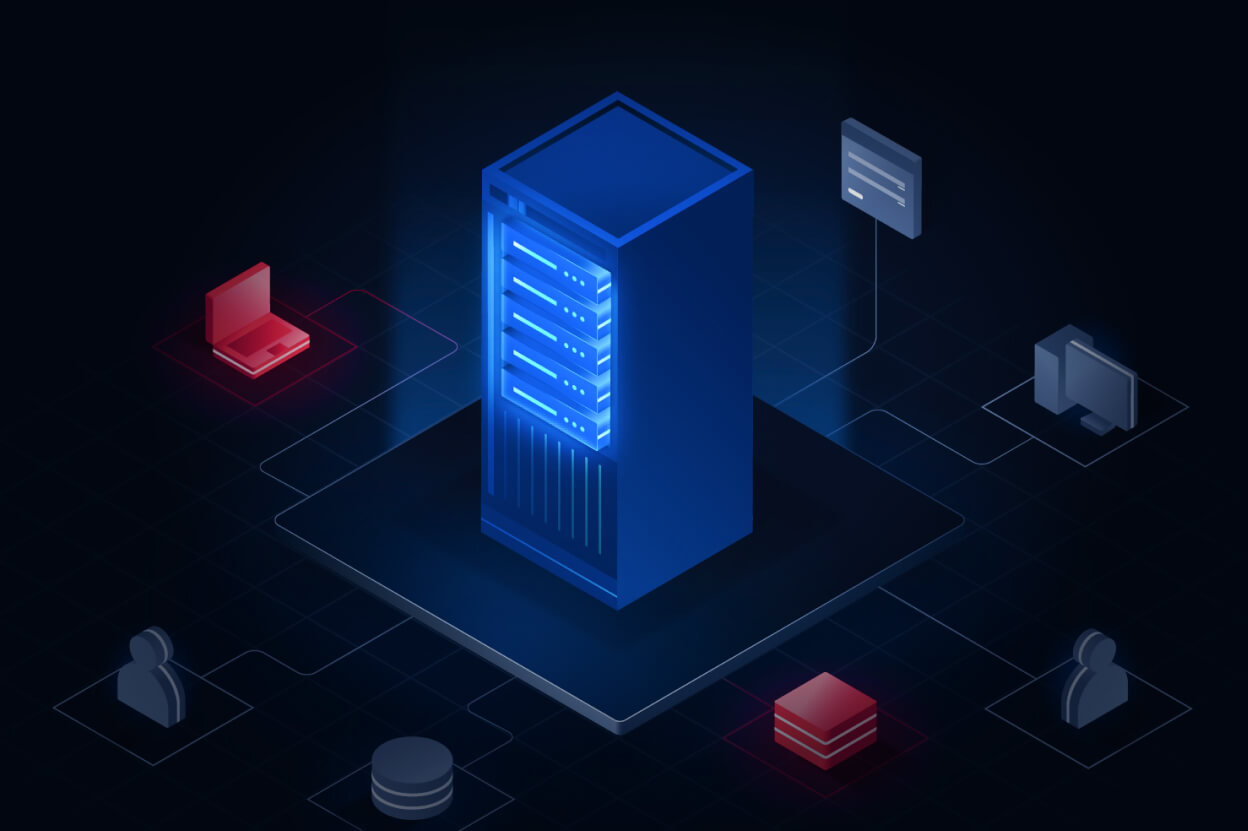
On-premises security software is installed locally.
Another difference is that in cloud security, the infrastructure and scalability is handled by the SaaS provider. However, these distinctions alone aren’t enough to determine the best choice for your business; it's essential to consider the nuances of each approach.
Software Management and Data Rights
On-premises security is managed internally, providing businesses with full control over their systems, including regular monitoring and infrastructure updates as needed. While this offers more freedom to customize security measures, it also places the entire burden of management on the business.
Cloud security software is managed remotely by the provider, meaning the client organization has less flexibility in configuring security. This approach may limit control, but it can provide greater peace of mind to security teams, as a cloud provider's revenue and reputation rely on its ability to secure data.
Customization and Storage Capacity
On-premises solutions offer greater flexibility, allowing organizations to configure security features to their specific needs, while cloud solutions can be less customizable. Meanwhile, cloud solutions are often more standardized, with providers offering preset features that vary by vendor and are shaped by legal and regulatory requirements.
Regarding storage, on-premises security relies on the organization’s infrastructure with fixed limits. Expanding the infrastructure requires financial investments in upgrades and ongoing maintenance, and scaling can be complex. Cloud security offers the potential for virtually unlimited capacity, allowing businesses to scale up or down with ease, depending on their plan, without the need for physical hardware.
When to Choose Cloud vs On-Premise Security
Cloud vs. on-premises security isn’t a decision solely influenced by how effectively each can protect your sensitive data. It’s also a business decision, driven by factors such as company size, budget, industry-specific needs, and long-term growth plans.
Scenarios Favoring Cloud Security
Cloud security is best suited for companies looking for agility, flexibility, and cost savings. Vendors provide solutions that can easily be scaled up or down depending on specific business needs, an approach which also works for businesses with limited IT resources.
Cloud security reduces the burden of ongoing maintenance, as the cloud provider takes care of all the heavy lifting. The lack of physical infrastructure needed from the customer side also eliminates the need for significant financial investments, opening the organization up for quicker decision-making and faster implementation.
Scenarios Favoring On-Premise Security
On the other side of the spectrum, on-premises security is best for businesses strictly regulated by data localization and privacy laws. If your organization manages highly sensitive data, on-premises security provides direct system oversight and helps you meet both internal and external compliance standards.
Financially speaking, on-premises solutions typically require more resources, which makes them more appealing to established organizations. These companies can benefit from the flexibility to customize their security solutions to align precisely with their needs.
Additionally, on-premises security is often the better choice for businesses that require higher levels of physical security or need to keep their data isolated from third-party providers and partners. Finally, companies that prioritize direct control over their data and systems will benefit most from the strict physical and digital access controls offered by on-premises solutions.
Is Cloud Security More Secure Than On-Premises Solutions?
Ultimately, the key question is: which option offers the most secure approach?
Firstly, data equals risk—the more data you have, the greater the threat of a breach. However, you can be as prepared as possible for cyberthreats specific to your business. To that end, when deciding between on-premises or cloud security, you should look at the risk of data breaches, compliance rules, and other business needs.
Data Breaches and Compliance
Many businesses mistakenly believe that on-premises is inherently more secure. In reality, cloud security providers invest heavily in protective measures, ensuring that even in the event of a breach, clients' data remains secure through preemptive actions such as advanced encryption and backup systems.
The approach to handling data breaches differs between solutions: cloud-based security offers cutting-edge technology and dedicated teams, whereas on-premises infrastructure often suffers from poorly maintained hardware after installation. This scenario often leads to vulnerabilities, such as hardware failures, power outages, and an increased risk of cyberattacks.
In fact, some reports suggest that organizations with on-premises infrastructure are nearly twice as likely to experience ransomware attacks as those using cloud solutions. Regardless of which option you choose, your organization will still need to navigate regulations, ensure data sovereignty, meet compliance regulations both at rest and in transit, and set up solid monitoring and incident response plans.
Cloud security can be more streamlined. The provider takes care of infrastructure security, but you're still responsible for data protection, encryption, and access control. On the other hand, with on-premises security, you’ll need to handle both infrastructure security and compliance on your own, requiring more effort overall, but greater control in time.
Which is the Right Solution for Your Business?
The right solution is also determined by factors such as scalability, cost considerations, and your long-term strategic goals.
Assessing Business Needs and Scalability
If your long-term business goals include rapid expansion, market growth, or managing a global workforce, cloud security is likely the right fit. This approach is inherently scalable, allowing you to expand quickly and securely without worrying about the constraints of physical infrastructure.
However, if your business requires strict data control, compliance, or operates in a highly regulated industry, on-premises solutions may align better with your objectives, even if it comes with higher costs.
Cost Considerations and Strategic Goals
Can your organization afford the costs of maintaining on-premises infrastructure, including hardware, data storage, and hiring the necessary experts? If you have a dedicated security team and enough resources to maintain the system, on-premises might be viable.
However, if you need to balance costs with growth, cloud security offers a more flexible and cost-effective solution without the need for ongoing infrastructure investments.
Conclusion
There’s no perfect solution; as long as you handle data, you’re a target. The more data you have—and the more sensitive it is—the bigger the target becomes. The real question is: which solution best fits your current business needs and future projected growth?
Cloud security offers flexibility, cost savings, and easy scaling, while on-premises gives you full control, customization, and more privacy, especially useful in highly regulated industries. It’s up to you to weigh in all the factors and make the call. Now that you have the key points, you’re ready to make a confident decision.
OPSWAT MetaDefender Cloud™ Offers Industry-Leading Cloud Security
Use MetaDefender Cloud™, to prevent, detect, and neutralize cloud file threats before they ever reach your networks, internal applications, workflows, or storage. Designed for flexibility and scalability, OPSWAT’s MetaDefender Cloud™ gives you the confidence to collaborate freely and securely.
FAQs
What is cloud security?
Cloud security refers to technologies, policies, and practices designed to protect cloud-based data, applications, and infrastructure. It includes identity and access management, data governance, risk mitigation strategies like MFA and firewalls, backup and recovery, and compliance with regulatory standards.
What is on-premises security?
On-premises security is the use of hardware and software located within an organization’s physical premises to protect sensitive data. The company owns and manages all infrastructure, including firewalls and servers, and is fully responsible for system maintenance, security, and compliance.
What are the advantages of cloud security?
Cloud security offers:
Cost savings over on-premises solutions
High scalability to grow with your business
Easier accessibility from any location
Faster deployment and response times
Simplified compliance with the help of cloud providers
What are the advantages of on-premises security?
On-premises security allows:
Full control over IT infrastructure
Customizable security configurations
Data storage within the physical boundaries of the organization
Compliance with data localization regulations
Increased control for organizations managing highly sensitive data
What are the key differences between cloud vs on-premises security?
The main differences are:
Location: Cloud security is hosted remotely; on-premises is local.
Management: Cloud is managed by providers; on-premises is managed in-house.
Scalability: Cloud can scale more easily; on-premises requires infrastructure investment.
Customization: On-premises allows more custom configurations; cloud is more standardized.
Control: On-premises gives full control; cloud offers less direct control but simpler maintenance.
When should a business choose cloud security?
Cloud security is ideal for businesses seeking agility, scalability, and cost savings. It’s also well-suited for organizations with limited IT resources, fast-paced environments, and growth-oriented strategies that benefit from minimal infrastructure and faster deployment.
When should a business choose on-premises security?
On-premises security is best for organizations operating under strict regulatory requirements, handling highly sensitive data, or needing physical and digital isolation from third-party providers. It’s also suitable for businesses that require high levels of customization and direct system control.
Is cloud security more secure than on-premises?
Neither solution is inherently more secure. Cloud providers invest heavily in protective technologies, including encryption and backup systems, while on-premises solutions rely on internal teams to maintain and secure systems. The right choice depends on business needs, compliance requirements, and available resources.
What compliance considerations apply to cloud and on-premises security?
Both solutions must meet regulations such as data sovereignty, protection at rest and in transit, and industry-specific standards. Cloud providers assist with infrastructure security, while users remain responsible for data protection. On-premises solutions require full responsibility for infrastructure and regulatory compliance.
How should a business decide between cloud and on-premises security?
Factors to consider include:
Scalability needs
Compliance and data control requirements
Available IT resources and budget
Business growth and global workforce support
Cloud is typically better for flexibility and fast scaling, while on-premises suits organizations needing strict control and regulatory adherence.
